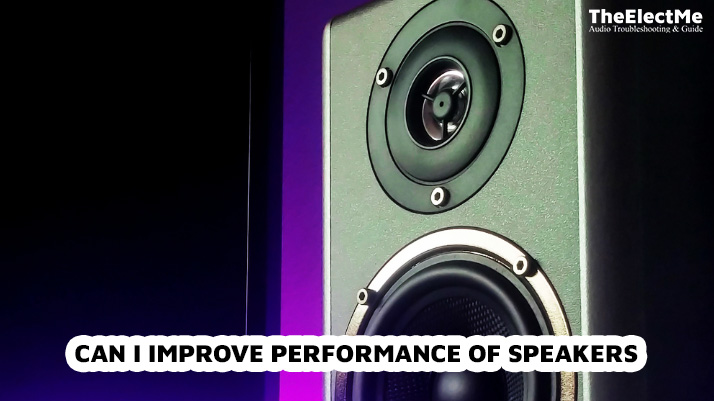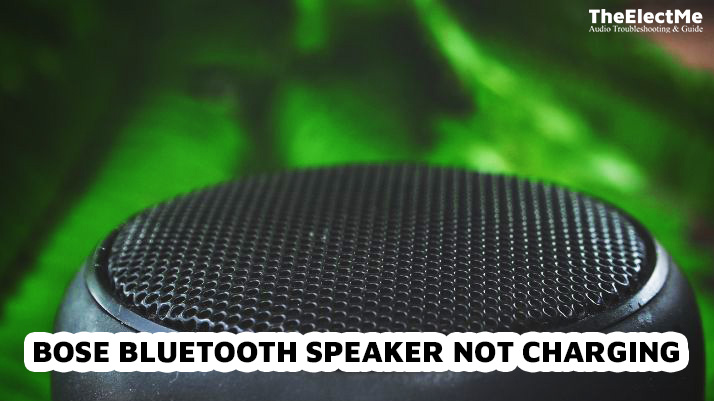A muffled voice, low confidence, and jumbled delivery are common issues that can impact speakers’ performance. Speaker sound quality and delivery can make or break a message, whether for a presentation or an interview. The question: Can I improve performance of speakers? The answer is a resounding yes!

With intentional effort and practice, anyone can enhance their speaker performance.
Once you do, you’ll see an improvement in your speaker performance and leave a lasting impression on any audience. Let’s start with the basics – why is speaker performance important?
Why Speaker Performance Matters?
Speaker performance matters because it bridges the speaker and the audience. It is the key to effectively conveying a message and engaging the audience meaningfully.
A good speaker performance can result in better communication. It will leave the audience feeling confused, uninterested, or even disengaged.
On the other hand, a strong speaker performance can captivate and inspire an audience. It can leave a lasting impact and make the message memorable.
But beyond just delivering a message, speaker performance reflects the speaker’s credibility and confidence. A well-delivered speech or presentation can leave a positive impression and build trust with the audience.
In contrast, a poor speaker performance can lead to doubts about the speaker’s knowledge or expertise. The result it speaker damage and one car speaker not working.
Now, let’s delve into some techniques that can help improve speaker performance.
How Can I Improve Speaker Performance?
When it comes to improving speaker performance, there is no one-size-fits-all solution. However, some techniques can help speakers enhance their delivery and connect with their audience.
1. Adujst the room Acoustics
A room’s acoustics refer to how sound behaves in that space. Factors like size, shape, and materials used in the room can affect the way sound travels and is perceived by listeners. Room acoustics are crucial in ensuring transparent and audible delivery for speaker performance.
The speaker’s voice can sound muffled when the room’s acoustics are neglected. The reason is that sound waves can bounce off hard surfaces and create echoes or reverberations. It can make the speaker’s voice disrupt the flow of the presentation or speech.
To improve speaker performance, it is essential to adjust the room’s acoustics. Some ways to do this include:
- Adding acoustic panels or sound-absorbing materials to the room’s walls and ceiling.
- They position the speaker away from hard surfaces, such as a wall or window.
- Avoiding rooms with high ceilings or highly reflective surfaces like tiles.
When purchasing acoustic panels, look for those specifically designed for speech or voice clarity. Additionally, always do a sound check before delivering the speech to ensure the acoustics are suitable for speaker performance.
2. Speaker Cable Management
Another aspect that can impact speaker performance is cable management. Messy cables and tangled cords can be distracting for both the speaker and the audience. It can also lead to technical difficulties and disrupt the presentation flow.
To improve speaker performance, organize and secure all cables before starting. Use cable ties, tape, or clips to keep them tidy and out of the way. A clean and organized setup can help the speaker focus on their delivery and engage with the audience effectively.
When you purchase cables, follow the below tips for better speaker performance:
- Use high-quality, shielded cables to minimize interference and ensure clear sound transmission.
- Match the cable length to the distance between the speaker and the audio source to avoid excess cable clutter.
- Opt for cables with color-coded ends for easy identification and setup.
3. Use Visual Aids
Visual aids are an effective way to enhance speaker performance and engage the audience. They can help break up monotonous speech patterns and make the message more memorable.
Some types of visual aids include:
- Slideshow presentations with images, graphs, or videos.
- Physical props or objects related to the topic.
- Whiteboards or flip charts for drawing diagrams or writing key points.
When using visual aids, remember that they should complement the speech and not distract from it. Avoid cluttered slides with too much information, and ensure the visual aids are visible to everyone in the audience.

4. Amplify Your Speakers
Amplifying a speaker refers to increasing the volume or sound level of the speaker's voice. This is especially important in larger venues or when speaking to a large audience.
To amplify a speaker, you can use:
- A microphone connected to a PA system (public address system).
- A portable amplifier that can be attached to the speaker’s clothing or used as a handheld device.
- Wireless microphones for added mobility.
When amplifying a speaker, it is crucial to test the equipment beforehand and adjust the sound levels accordingly. This will ensure that the speaker's voice is clear and audible to everyone in the audience.
5. Use Speaker Stands
A speaker stand is a device used to elevate and position a speaker. During speaker performance, using a stand can help project the speaker's voice and make it more audible.
Different speaker stands, such as tripod stands, pole mounts, or wall mounts, are available. When choosing a speaker stand, consider the venue's room layout.
For example, a tripod stand may better suit a large room with limited space. Additionally, ensure the stand is sturdy and secure to prevent any accidents during the speech.
Can you use a relay to power the speaker? The answer is yes. So, use these techniques to improve your speaker performance and engage with your audience more effectively.
Final Thoughts - Can I Improve Performance Of Speakers?
To sum up, the performance of the speakers matters for effective communication. It can impact the audience's understanding and perception of the speaker. You can add life to your presentation with good sound quality and speaker performance.
So, keep these techniques in mind and implement them in your speaker performances to make a lasting impact on your audience. Remember, practice makes perfect, and you can improve your speaker performance significantly with time and effort.
Keep learning and refining your skills to become a confident and impactful speaker.



